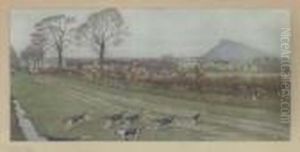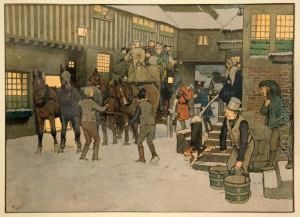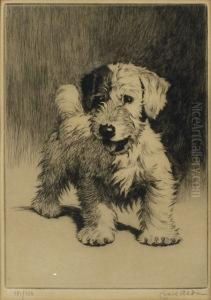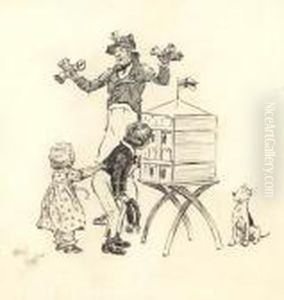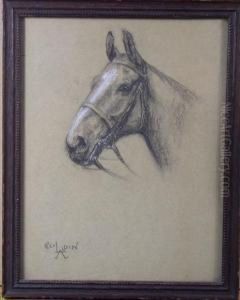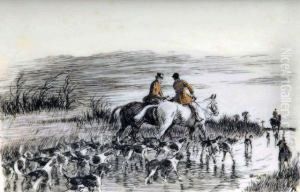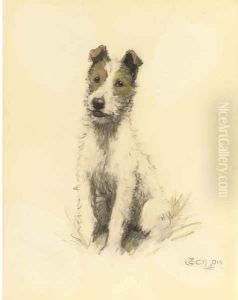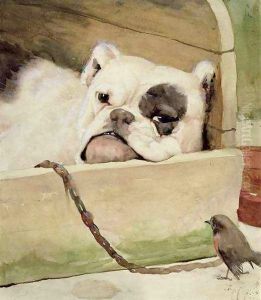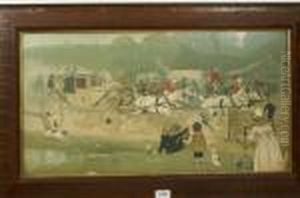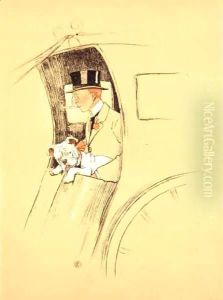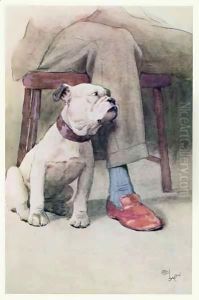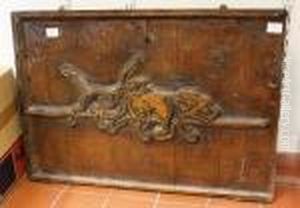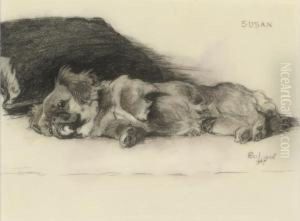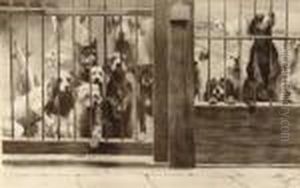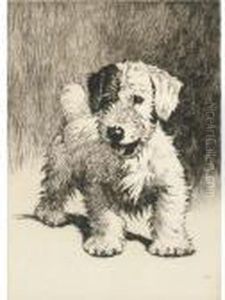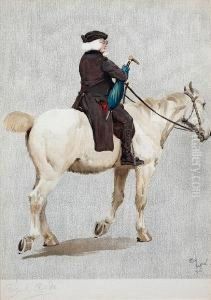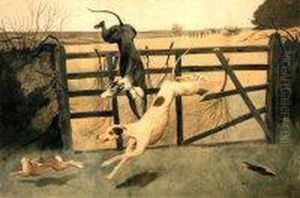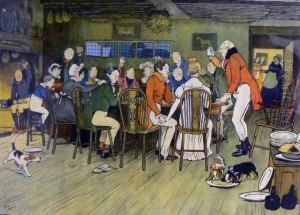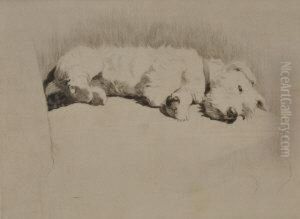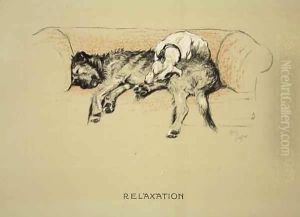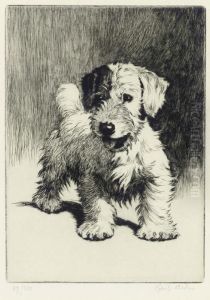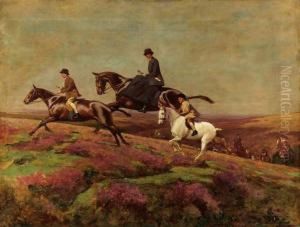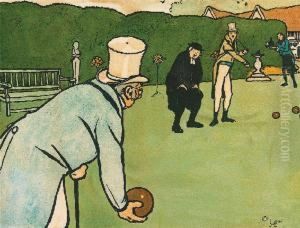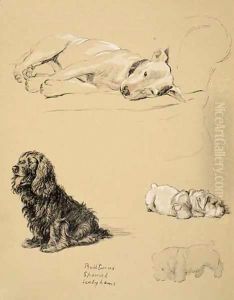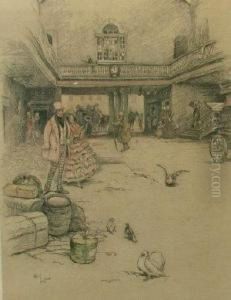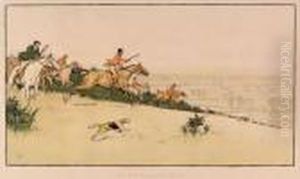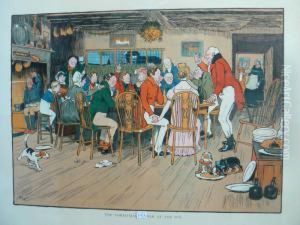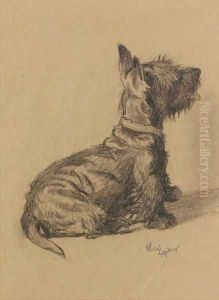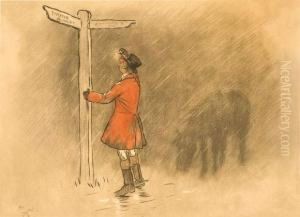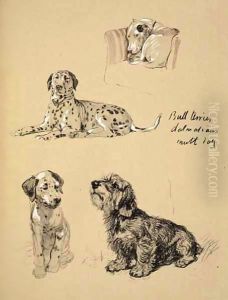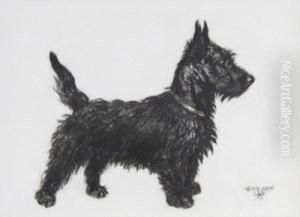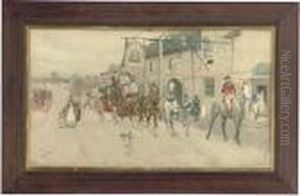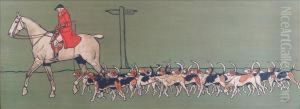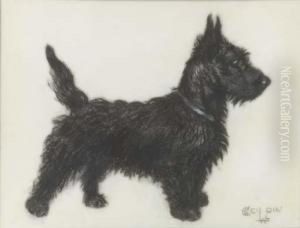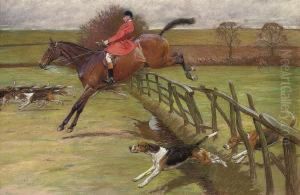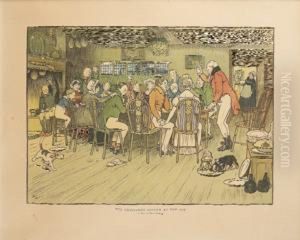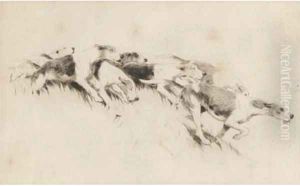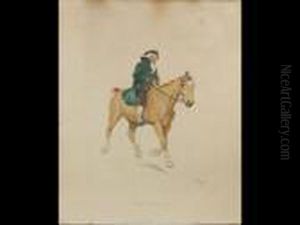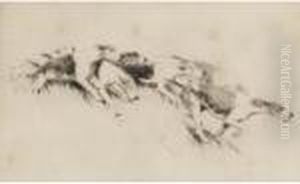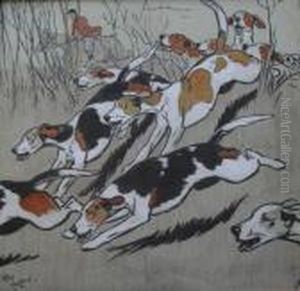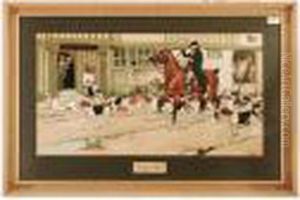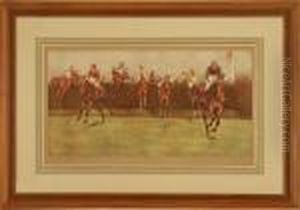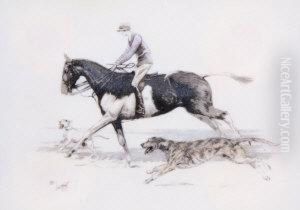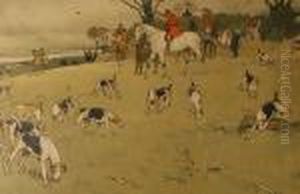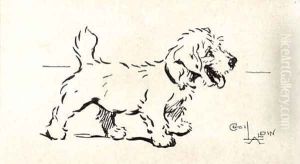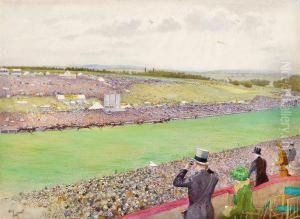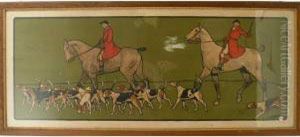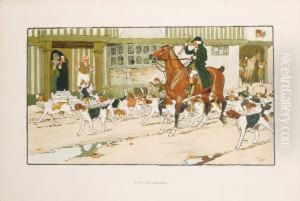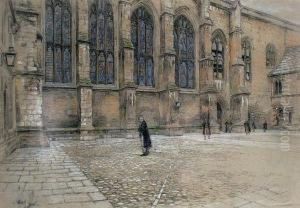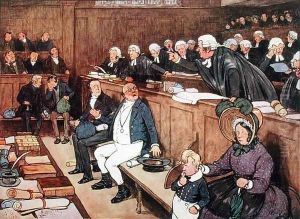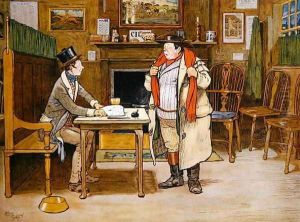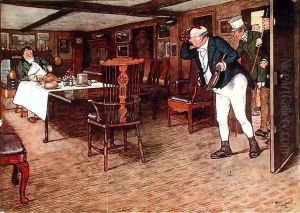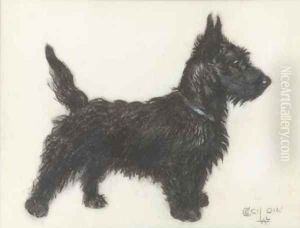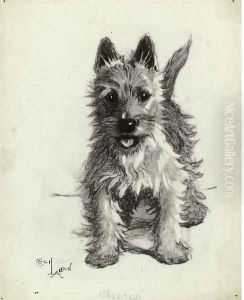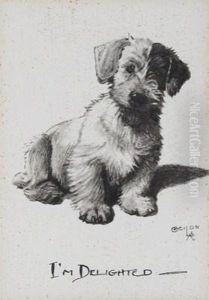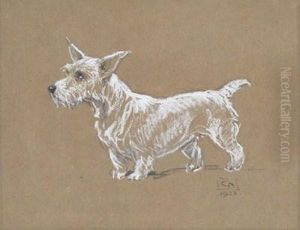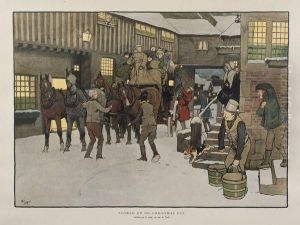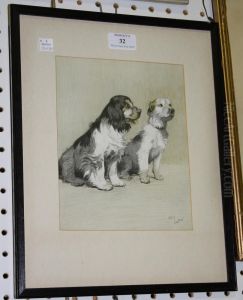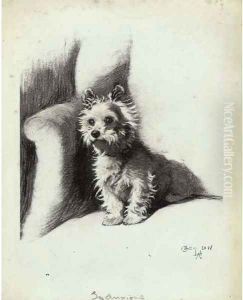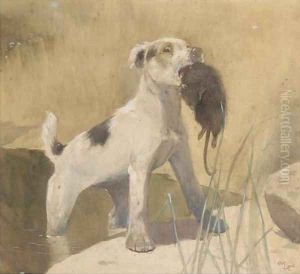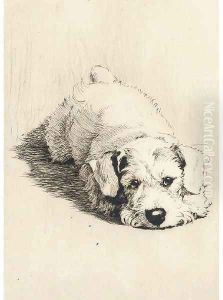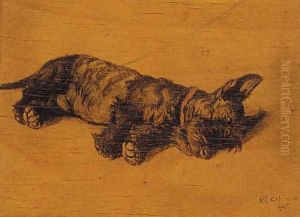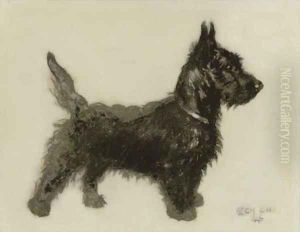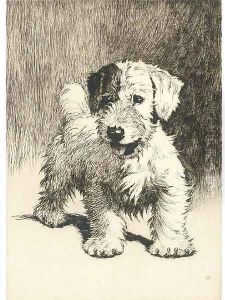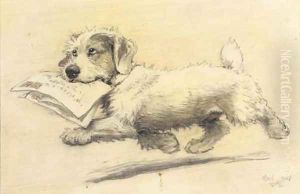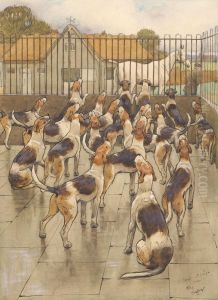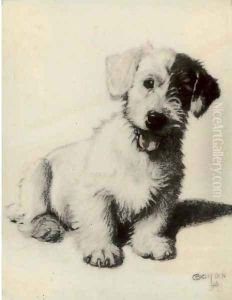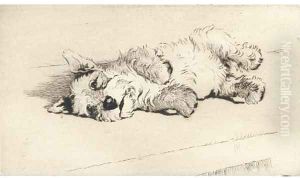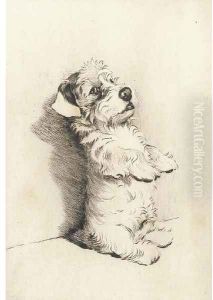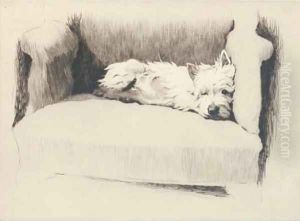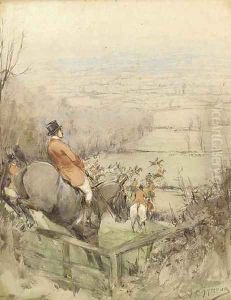Cecil Charles Aldin Paintings
Cecil Charles Aldin was an English artist and illustrator best known for his paintings and sketches of animals, sports, and rural life. Born on September 28, 1870, in Slough, Berkshire, Aldin demonstrated a natural talent for drawing from a young age. He was educated at Eastbourne College and later attended the National Art Training School in South Kensington, London.
Aldin's early career was marked by his work for illustrated books and magazines. He frequently contributed to popular periodicals of the time, such as 'The Illustrated London News' and 'The Graphic.' Aldin's distinctive style, characterized by its warmth and humor, quickly gained him recognition and a following. His illustrations often featured dogs—particularly bulldogs and terriers—which became a signature subject for the artist.
In addition to his work as an illustrator, Aldin was an accomplished painter and a member of the Royal Society of British Artists. He painted a variety of subjects, including hunting scenes, horse races, and portraits of domestic animals. These works were admired for their lively depiction of English country and sporting life, and they contributed to Aldin's reputation as one of the foremost sporting and animal artists of his time.
Aldin was also known for his love of old English inns and architecture, which led him to publish a series of books on these subjects, such as 'Old Inns,' 'Old Manor Houses,' and 'Cathedrals of England.' These books featured his illustrations and were well received for both their artistic merit and their contribution to the preservation of English heritage.
During World War I, Aldin served as a Remount Purchasing Officer, but he continued to produce art, including a series of patriotic works and images that captured the spirit of the British home front. After the war, he returned to his passions, producing more paintings and books, and also became involved in stage design.
Cecil Aldin's health declined in his later years, and he moved to Majorca in 1932 in an attempt to recover. Unfortunately, he passed away on January 6, 1935. Aldin's legacy lives on through his prolific body of work, which continues to be celebrated for its depiction of an idyllic bygone era of English country life.
